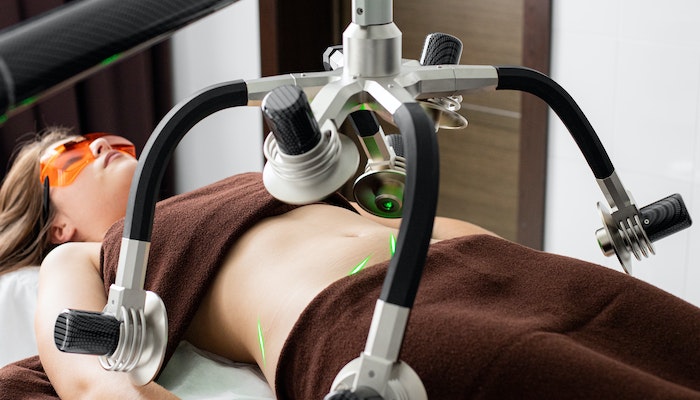
Liposuction is a popular form of cosmetic surgery designed for fat elimination. Although the procedure offers a range of benefits, it’s not a magic wand for total weight loss. Before you undergo the procedure, you should know these six things.
1. What Liposuction Entails
Liposuction is a procedure that, in essence, vacuums excess fat from particular areas of the body. These areas could include the hips, thighs, stomach, arms, neck, or back. However, it’s important to note that this procedure won’t aid in removing stretch marks, cellulite, or dimples.
Beyond cosmetic benefits, liposuction can also serve medical purposes. Health issues such as gynecomastia, lymphedema, and lipomas can be tackled effectively with this procedure.
Performed with the help of a cannula, a thin tube used to dislodge and vacuum fat, the process can range from 30 minutes to several hours. The duration typically depends on the extent of fat removal required. Depending on the specifics, liposuction procedures can be executed in a doctor’s office or a hospital.
2. What Type of Liposuction Makes Sense for You
There are four main types of liposuction. Each one involves different amounts of sedation and processes. Also, each form of liposuction is designed for other body parts. Before you undergo any type of procedure, you should learn about each type of liposuction.
- Tumescent Liposuction: The process involves injecting a medicated solution into targeted areas, which consists of an anesthetic, epinephrine, and an IV salt solution.
- Super-wet Technique: This method is akin to tumescent liposuction but uses less fluid and may require additional sedatives.
- Ultrasound-assisted Liposuction: This technique employs ultrasonic vibrations to liquefy fat cells, proving helpful in removing fat from more fibrous areas of the body.
- Laser-assisted Liposuction: This method applies laser energy to liquefy fat cells and is suitable for smaller areas like the face, neck, or chin.
3. The Costs and Risks
In 2020, the average cost of liposuction in the United States was $3,637. This cost, however, does not include expenses related to the operation room or anesthesia. Moreover, insurance typically only covers this procedure if it’s performed for medical reasons.
Like any medical procedure, liposuction carries certain risks, including an adverse reaction to anesthesia, infection, numbness, bruising, scarring, slow or unsatisfactory wound healing, undesirable results, the need for a corrective procedure, and thermal burns.
4. What’s Involved in the Preparation and Recovery
Before undergoing liposuction, you must discuss your goals, expectations, lifestyle, and dietary habits with your surgeon. This conversation will also help determine the appropriate type of anesthesia and specific pre-surgery instructions. Also, arrange for someone to accompany you to and from the surgery.
Following the liposuction procedure, expect some pain and discomfort in the initial three days. Usually, patients can return to work for around two weeks, with most pain and swelling subsiding after a month. Full results are typically noticeable in three to six months, providing a clearer picture of the surgery’s outcome.
5. How to Choose the Right Surgeon
Undergoing any type of medical procedure can be scary. However, the right doctor for the job can set your mind at ease. For this reason, Dr. Neinstein of New York-based Neinstein Plastic Surgery says there are several things you should do when choosing a surgeon for liposuction.
First and foremost, you should verify if they are board certified by a reputable organization, such as the American Board of Plastic Surgery. They should also have at least six years of surgical training post-medical school and graduate from an accredited medical institution. Most importantly, your chosen surgeon specializes in liposuction and can provide evidence of their previous work.
6. Whether Liposuction is Right for You
Embarking on the path to cosmetic surgery is a highly personal decision. It requires deep introspection and a comprehensive understanding of what the procedure entails. Liposuction, while transformative, is not suitable for everyone.
For example, if you have significant health issues, liposuction may not be suitable. This is especially true if your health concerns affect the heart, lungs, or blood.
Also, liposuction is best for those who experience fat storage in specific areas of the body, and these fat stores seem resistant to diet and exercise. However, this procedure is not designed for all-over weight loss or a treatment for obesity. Ideally, you should be within 30 percent of your ideal body weight and have specific areas of refinement to undergo liposuction.
Finally, your expectations may determine if this procedure is best for you. Liposuction can deliver impressive results, but it’s essential to approach it with realistic expectations. Remember that the process may not lead to a perfect body and won’t fundamentally change your body shape. It’s a tool to refine and sculpt, not overhaul completely.
Liposuction can significantly boost self-esteem and body image. However, you should fully understand the process before committing to this medical treatment option. Making an informed decision about liposuction, or any cosmetic procedure, is a step towards a happier, healthier you.
Feature Image from Pexels



















Understanding liposuction before the procedure is crucial. Your insights shed light on what to expect. Thanks for the informative read!